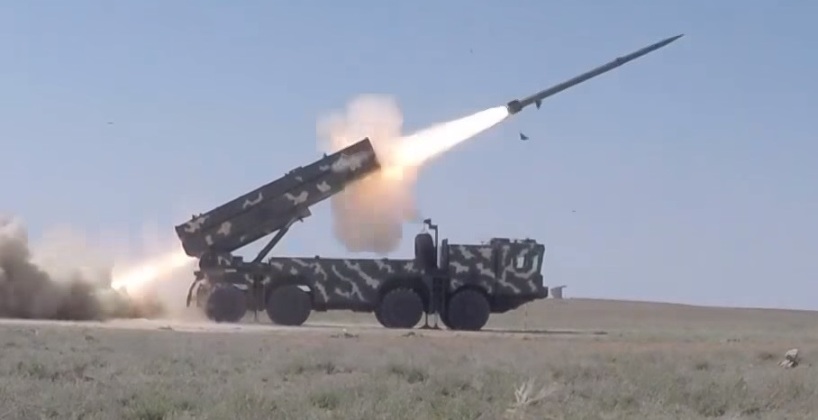News
Europe’s Longest Ranged Rocket Artillery System: The Sino-Belarusian Polonez Could Soon Sell to Russia
The Polonez rocket artillery system first became operational in 2016, and is widely considered most notable defence product developed in Belarus since the end of the Soviet era in 1991. The disintegration of the Soviet Union saw the large majority of the state’s defence sector inherited by Russia, with most of the remainder falling under Ukraine and Belarus the latter which remains closely integrated with that of Russia. While the bulk of Belarusian arms production is represented by subsystems or transport vehicles for Russian weaponry, the country has developed more unique systems itself both for its own armed forces and for export. The Polonez system was unique, however, for its heavy reliance on Chinese technologies at a time of strengthening ties between Minsk and Beijing, which capitalised on China’s strong global leadership in the field of rocket artillery.
The Polonez completed testing in May 2016, and begun deliveries to the Belarusian Army three months later. With Belarus being particularly specialised in the production of heavy wheeled vehicles, the Polonez used the indigenous 8×8 wheel MZKT7930 Astrolog chassis as a base for its mobile launcher. Each carried eight Chinese 301mm A200 rockets with a very long range of 200 km range, which was later extended to 290km with the Polonez-M variant making them by far the longest ranged rocket artillery systems developed outside China or North Korea. Belarusian government sources reported in 2021 that an indigenous rocket for the system would substitute the Chinese original and provide a similar range, possibly indicating technology transfers from China had been made.

Despite the Polonez’s advanced capabilities, the system was not adopted in meaningful numbers with only six launchers being delivered – and these being deployed under the 336th Rocket Artillery Brigade. The small size of Belarus’ rocket artillery forces means this was still not a totally insignificant number, with the Army deploying just 42 300mm rocket artillery batteries the remaining 36 being Soviet built 9A52 Smerch systems. Beyond the Belarusian Army ten more Polonez launchers were delivered to Azerbaijan to fulfil a June 2018 contract, for a total production run of just 16 launchers. Belarus’ very small defence budget of only around $800 million, the bulk of which was devoted to operational expenses rather than acquisitions, was thus a key shortcoming of the Polonez program. The batteries in service have served as a symbol of the potential of Belarus’ defence sector, despite their most potent feature their artillery rockets being Chinese in origin, and have played important roles at testing ranges as well as in Belarusian military parades.
The possibility remains that the Polonez could see further orders either from Belarus or from Russia itself, with the Russian Army lacking access to longer ranged rocket artillery leading to widespread speculation that it could otherwise turn to North Korean systems, with the rival KN-25 having a 400km range. The importance of long range rocket artillery capabilities has become increasingly apparent as artillery has come to play a central role in the Russian-Ukrainian War, although a key disadvantage of the Polonez for Russia is that it is unlikely to be acquired in sufficient numbers and quickly enough due to the small scale of production. Belarusian production of the system’s rockets, however, could potentially be key to allowing it to be sold despite China’s commitments not to arm either Russia or Ukraine during the conflict. The Belarusian Army may well itself also resume orders for the Polonez, after having shown a renewed interest in strike capabilities with the acquisition of Russian Iskander-M ballistic missile systems and domestic development with Russia of a Belarusian Iskander derivative.












